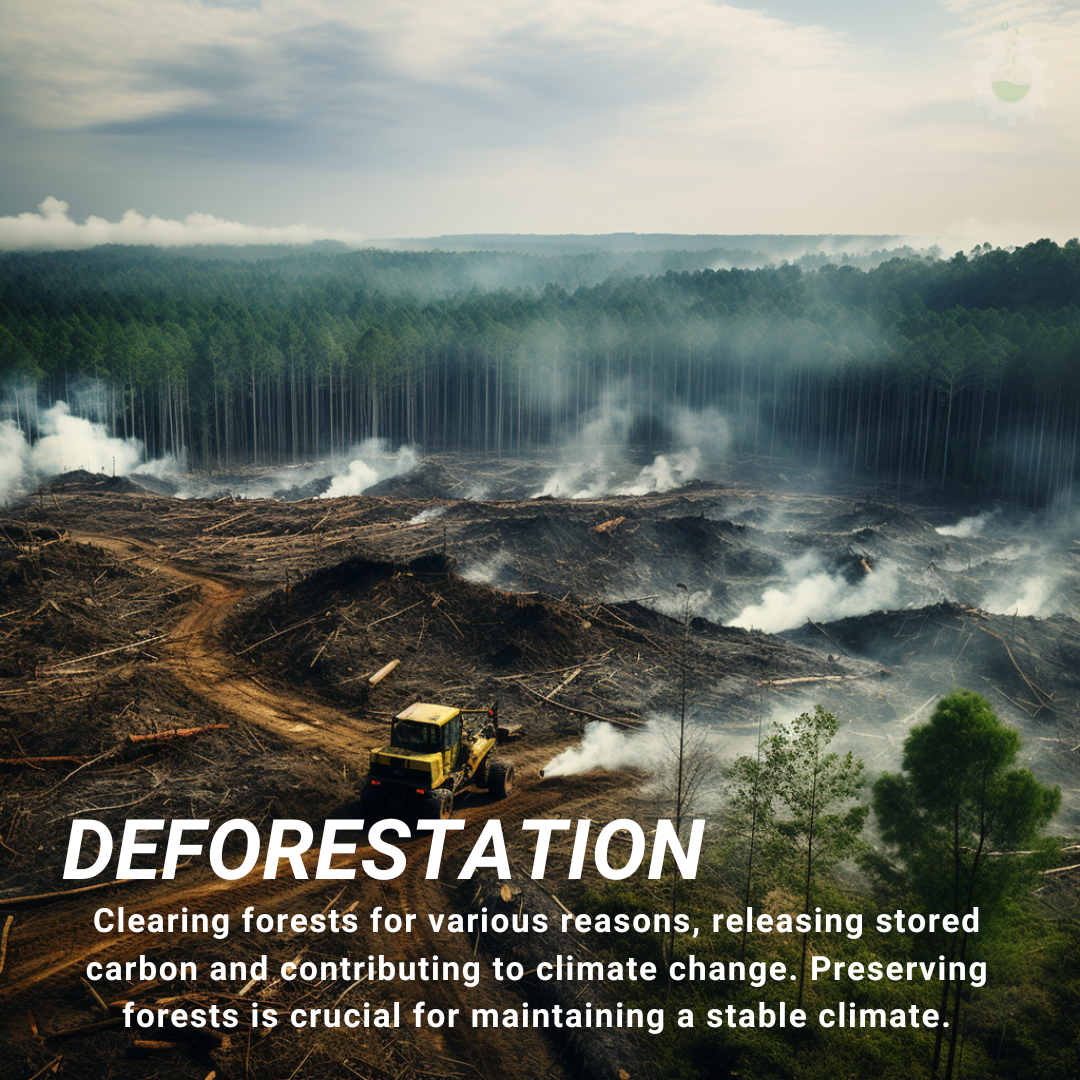August 18, 2023
Climate Change Poster Collection of the Day – Deforestation
Book a Demo
Today’s Climate Change Poster Collection highlights Deforestation, a term that refers to the process where forests or stands of trees are cleared, often to pave the way for non-forest uses such as agriculture or urban development. This activity is more than just the removal of trees; it influences our environment in several ways, with a series of serious environmental impacts. These impacts range from the loss of biodiversity to the disruption of water and carbon cycles, and to the contribution to climate change.
When discussing deforestation, it’s important to highlight the plight of tropical rainforests. These rainforests are the most biologically diverse and complex types of forests on our planet. They are home to a vast array of species, many of which are endemic to these regions. Unfortunately, these vital ecosystems are particularly affected by the destructive process of deforestation.
There are various factors causing deforestation. These can include logging, mining, oil extraction, dam building, and conversion of forest land into farms and ranches. Each of these activities directly contributes to the decline of forested areas, putting the species that inhabit them at risk.
From an economic perspective, deforestation can provide short-term benefits. The cleared land can be used for agriculture, and the timber can provide immediate profits. However, these short-term gains often lead to long-term problems such as soil erosion and loss of resources. The depletion of forests also results in the loss of potential long-term income from forest products and services.
One of the most alarming aspects of deforestation is its contribution to climate change. Deforestation is responsible for contributing to 15% of all greenhouse gas emissions, which are primarily responsible for global warming. As forests play an essential role in sequestering carbon dioxide, their destruction exacerbates the problem of climate change.
Efforts to combat deforestation are manifold. They include sustainable forestry practices, reforestation, and conservation efforts to protect existing forests. Sustainable forestry practices involve the careful management of forest resources to prevent overexploitation. Reforestation, on the other hand, involves planting new trees to replace those that have been cut down.
Other measures to control deforestation include enforcing regulations on logging and forest conversion, promoting the use of sustainable forest resources, and restoring deforested places. Enforcing regulations can deter illegal activities that contribute to deforestation while promoting the use of sustainable forest resources encourages the responsible use of our forests. Restoring deforested places, meanwhile, helps to bring back the lost biodiversity and reinstate the vital ecosystem services that forests provide.
While deforestation presents a significant global challenge, through concerted and sustainable efforts, it is possible to mitigate its impacts and protect our invaluable forest resources.
Discover an inspiring collection of climate change posters.



